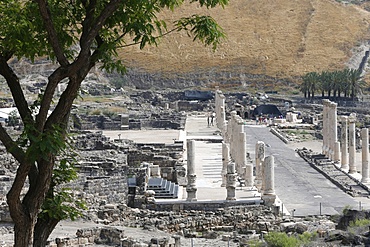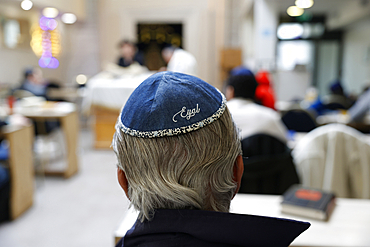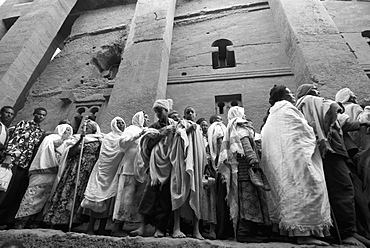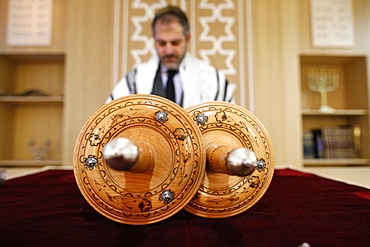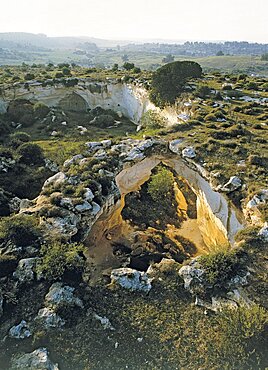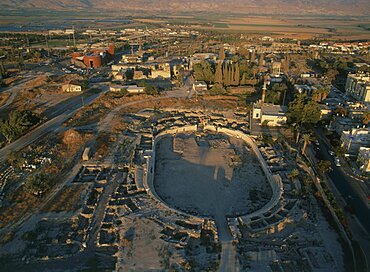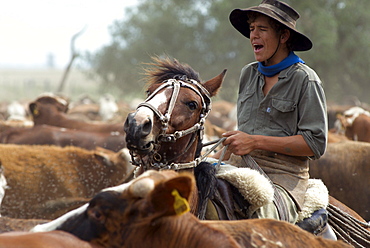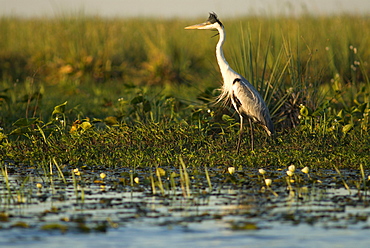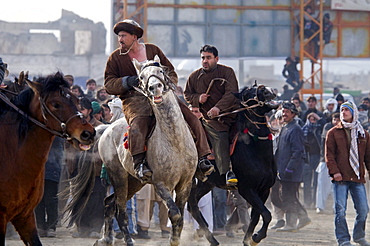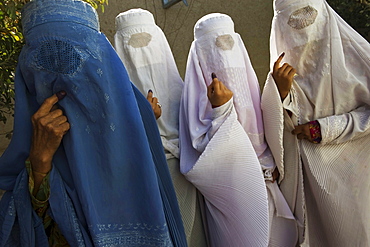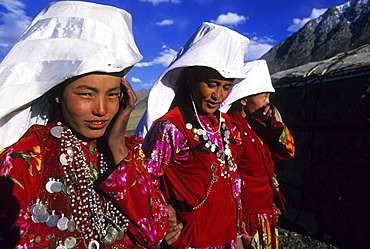Results
13 results found
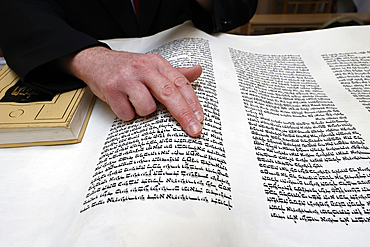
Celebration of Purim festival, Rabbi reading the Meghilat (Book of Esther), Beth Loubavitch Synagogue, Montrouge, France
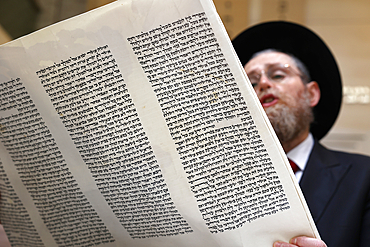
Celebration of Purim festival, Rabbi reading the Meghilat (Book of Esther), Beth Loubavitch Synagogue, Montrouge, France
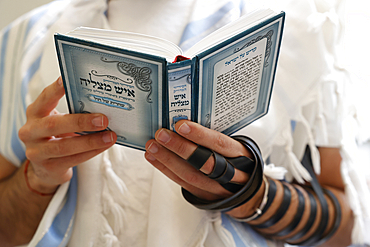
Celebration of Purim festival, faithful holding book and wearing phylacteries, Beth Loubavitch Synagogue, Montrouge, France

Orthodox Jew writing a Torah scroll, sculpture at the Diaspora Museum, Beth Hatefutsoth, Tel Aviv, Israel, Middle East

Model of the Synagogue of Chodoroy, Diaspora Museum, Beth Hatefutsoth, Tel Aviv, Israel, Middle East
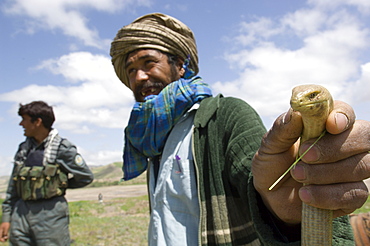
A Tajik man holds a glass lizard (Ophisaurus apodus), a leg-less lizard, found near the Band-e Baba mountains, during a wildlife survey conducted by a team sponsored by the Wildlife Conservation Society, Kushk-i Kuhna District, Herat Province, Afghanistan
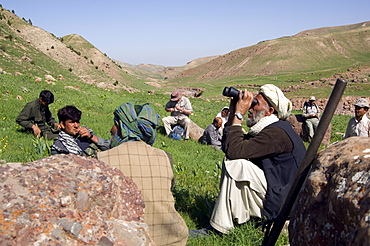
A village headman, Nur Ahmed, scans cliffs for ibex, while members of a wildlife survey team and their police escorts have a rest, in the Band-e Baba range, Herat Province, Afghanistan

Dr. George Schaller and the other members of his wildlife survey team have dinner in the guest room of the village headman, in the village of Dera Jawal, Kushk-i Kuhna District, Herat Province, Afghanistan
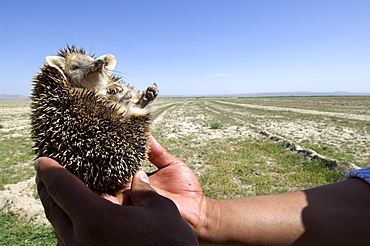
A man holds a long eared hedgehog (Hemiechinus auritus) found along a road in Gurian District, Herat Province, during a wildlife survey of northwest Afghanistan
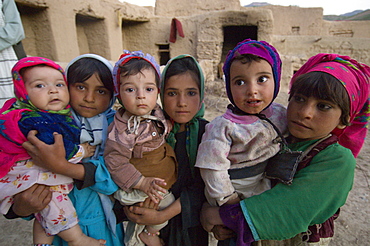
Young girls hold infant siblings in their home compound, in the Tajik village of Dera Jawal, at the base of the Band-e Baba range, Herat Province, Afghanistan

The leader of a band of Kuchi nomads, Hamid, entertains a wildlife survey team and discusses wildlife in the region with biology student Zalmai Moheb, in the range lands near the Turkmenistan border, Kushk-i Kuhna district, Herat Province, Afghanistan

Conservation biologist George Schaller asks local shepherds and policemen about leopards and cheetah, at a border post on the border with Iran, in Gulran District, in the northwest part of Herat Province. Dr. Schaller was making a wildlife survey to see what remained of biodiversity in the Northwest corner of Afghanistan, and interviewed soldiers, shepherds and other Afghans who move through the region to find out what wildlife they had seen.

Boys pause in a field on the edge of the Tajik village of Dera Jawal, at the base of the Band-e Baba range, Herat Province, Afghanistan

Tajik men lead donkeys laden with equipment across a river swollen with spring rains, as a team heads into the Band-e Baba range to conduct a wildlife survey, Kushk-i Kuhna District, Herat Province, Afghanistan
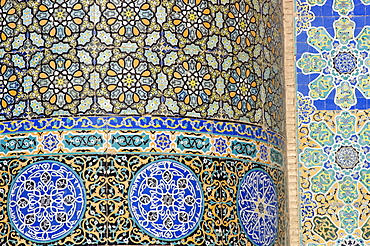
Floral & geometric patterns of restored Timurid tile mosaics decorate a wall in the courtyard of the Friday Mosque or "Masjid-i Jami", the largest mosque in Herat, dating to 1200 AD, Herat, Afghanistan. Much of the Ghorid and Timurid decorations on the mosque had been badly damaged during the centuries, but a restoration project begun in 1943 continues today.
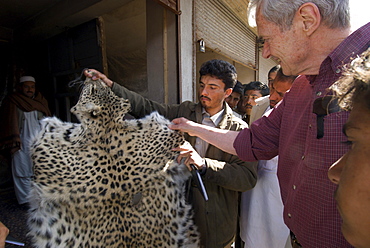
Wildlife biologist George Schaller examines a leopard skin being sold in the bazaar of Herat, Herat Province, Afghanistan. Dr. George Schaller led a trip into the regions northwest of Herat to make a wildlife survey, looking especially for any signs of leopard, cheetah and wild ass.
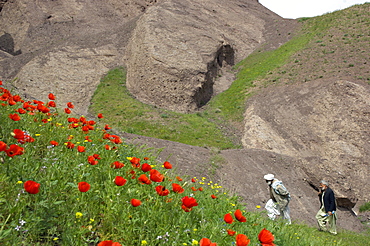
Haji Joma Khan, the head of Char Manar village in Gulran District, walks with a friend past a field of wild poppies,in the northwest part of Herat Province.
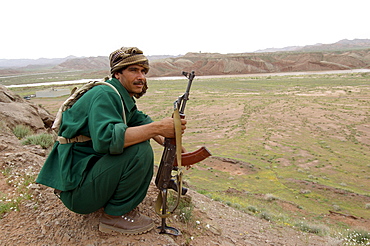
A border policeman looks out form a ridge, at a post on the Hari Rud River, with Iran just on the other side, in Gulran District, in the northwest part of Herat Province.
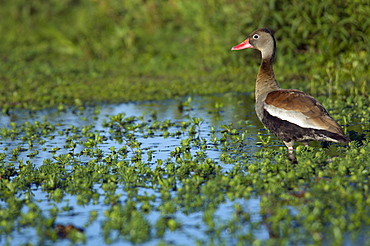
A Black-bellied whistling duck (Dendrocygna autumnalis) or "Sirir Vientre Negro", walks along the shallows on the edge of a floating island in Laguna Ibera, Ibera Natural Reserve, Esteros del Ibera, Corrientes Province, Argentina

Young Baluch men on a motorbike ride on a dirt road through a desert landscape brushed with green after spring rains, in the Gulran district near the Iran and Turkmenistan border

A Kuchi man fingers prayer beads in a nomad camp near the Turkmenistan border in, Kushk-i Kuhna district, Herat Province, Afghanistan

A young girl smiles shyly in the Tajik village of Dera Jawal, at the base of the Band-e Baba range, Herat Province, Afghanistan
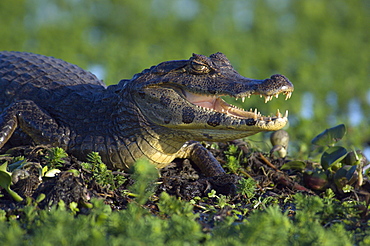
A Yacare Caiman (Caiman yacare) or "Yacar_ Negro" basks in the sun among vegetation on a the edge of a floating island in Laguna Ibera, Ibera Natural Reserve, near Colonia Carlos Pelligrini, Corrientes Province, Argentina
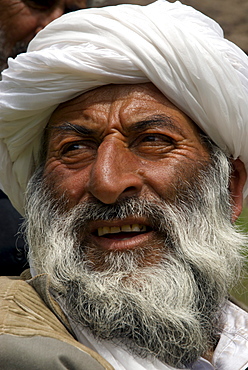
Haji Joma Khan, the head of Char Manar village in Gulran District, talks to wildlife biologists in the northwest part of Herat Province.

A group of baby Capybaras (hydrochaeris hydrochaeris) or "carpinchos", huddle together near a path at Estancia Rincon del Socorro, Esteros del Ibera, Corrientes Province, Argentina. The estancia, once a working cattle ranch, is being converted into a nature preserve and is a haven for all kinds of birds and wildlife.

A guard at Queen Gawhar Shad's mausoleum, stands in front of four tall minarets, once part of a madrassa that was built in the 15th century by the last of the Timurid rulers, in Herat, Herat Province, Afghanistan. One of the finest examples of Timurid architecture, the minarets are spectacular remnants of a much larger complex considered to be one of the finest examples of Timurid architecture
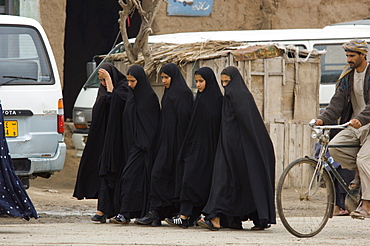
Tajik girls wear full length Iranian style veils, called "abbaya" as they walk to school through the bazaar of Turghondi, a town on the border with Turkmenistan, in the northern part of Herat Province.

Members of a wildlife survey team, student Zalmai Moheb and team leader George Schaller, discuss wildlife with Kuchi nomads while policeman accompanying the team look on, in the range lands near the Turkmenistan border, Kushk-i Kuhna district, Herat Province, Afghanistan

Mud houses cluster below steep hills and along a seasonal river, in the village of Dera Jawal, at the base of the Band-e Baba range, Herat Province, Afghanistan

A local hunter, Abdul Rahim, points out mountains where ibex are found, to the village headman, Nur Ahmed, in the Band-e Baba range, Herat Province, Afghanistan

A local hunter, Abdul Rahim, discusses wild animals and their habitat with a wildlife biologist, Dr. George Schaller and his assistant, who are conducting a wildlife survey, in the Band-e Baba range, Herat Province, Afghanistan

Villagers from Dera Jawal village, Jamal Addeen and Abdul Rahim, meet in the leader's guest room, Herat Province
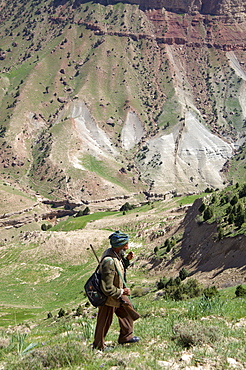
A local hunter, Abdul Rahim, walks up a grass covered slope above a steep valley, in the Band-e Baba range, Herat Province, Afghanistan
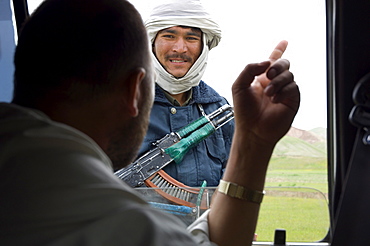
A Herati man asks for directions from a border policeman near the Turkmenistan border in, Kushk-i Kuhna district, Herat Province, Afghanistan
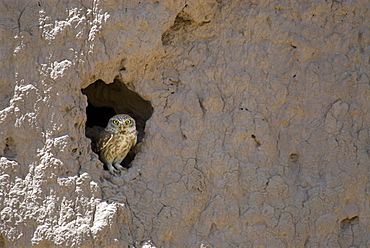
A Little owl (Athena noctua) peers from a hole in the mud wall of an old fort, in the town of Gurian, Herat Province

A local hunter, Abdul Rahim, talks to the arbob, or leader, of Dera Jawal village, Nur Ahmad, on the edge of a field while a soldier looks on, in the Band-e Baba range, Kushk-i Khuna district, Herat Province, Afghanistan
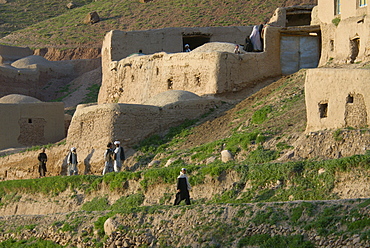
Men walk along a road at dusk, past mud homes in the Tajik village of Dera Jawal, in the Band-e Baba range, Herat Province, Afghanistan

Tajik boys ride donkeys past irrigated wheat fields, on the edge of the Tajik village of Dera Jawal, at the base of the Band-e Baba range, Herat Province, Afghanistan
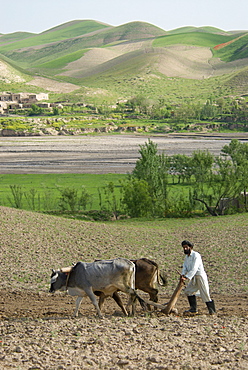
A farmer plows a field with oxen, near a village with traditional domed homes below green hills, in Kushk-i Kuhna district, Herat Province
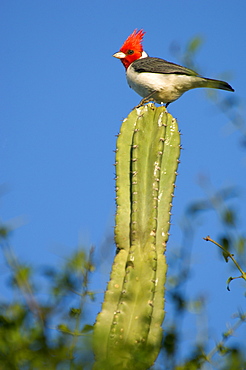
A Red-crested Cardinal (Paroaria coronata) or "Cardenal comun" perches on a cactus at Estancia Rincon del Socorro, Corrientes Province
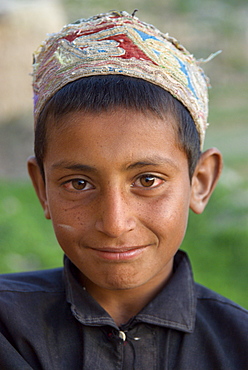
A young boy smiles shyly in the Tajik village of Dera Jawal, at the base of the Band-e Baba range, Herat Province, Afghanistan
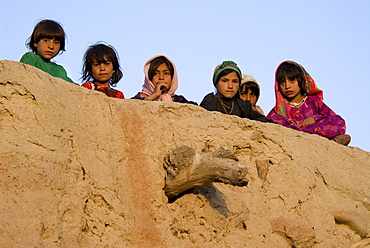
Young girls peer over the wall of a mud home in the Tajik village of Dera Jawal, at the base of the Band-e Baba range, Herat Province, Afghanistan

Policemen talk to nomadic Pashtun herders near their camp at the base of the Dau Shakh desert range, outside the town of Gurian, Herat Province
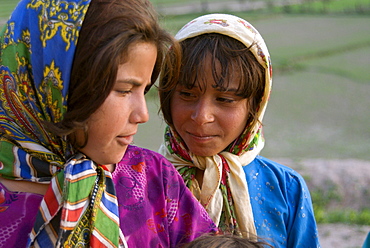
Two young girls share a secret in the Tajik village of Dera Jawal, at the base of the Band-e Baba range, Herat Province, Afghanistan
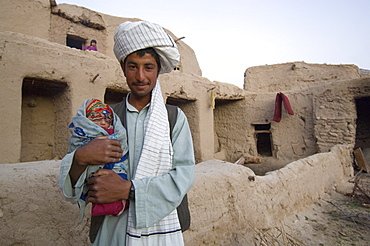
Young Tajik man holds his newborn son, in the compound of his home, in the Tajik village of Dera Jawal, at the base of the Band-e Baba range, Herat Province, Afghanistan

Women cook over an open fire in the kitchen area of a traditional northern Afghan home on the outskirts of Mazar-i Sharif, Afghanistan

Men dressed in elaborate costumes, loosely representing North African tribes, the Moors, smoke cigars while marching in a parade during the Festival of Moors and Christians, (La Fiesta de Moros y Cristianos) in the old town of Alcoy, Alicante Province.

A young woman prepares to vote for presidential and provincial candidates in national elections, Sultan Razia Girls High School, Mazar-i Sharif, Afghanistan on August 20, 2009.

A mass of people ride bicycles along Broadway in downtown Boulder, during a rally and demonstration against coal plants and to raise awareness of global warming, on the international day of action promoted by 350.org, October 24, 2009, in Boulder, Colorad

On the last day of campaigning before the election, crowds gather in the National Stadium for a large rally for a favored presidential candidate, Kabul, Afghanistan.
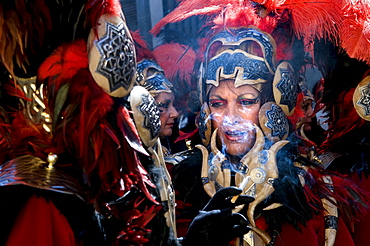
Women dressed in elaborate costumes, loosely representing the North African tribes, the Moors, smoke cigarettes before marching in a parade during the Festival of Moors and Christians, in the old town of Alcoy, Alicante Province, Valencia Autonomous Regio
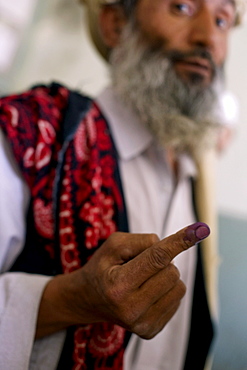
Afghan men vote on the day of presidential and provincial elections in Mazar-i Sharif, Afghanistan, August 20 2009
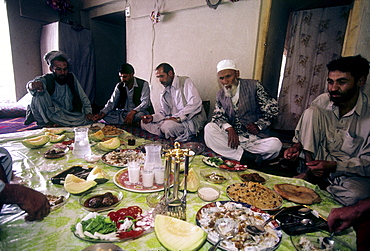
Afghan men and their guests eat a traditional feast of rice pilaf, mantu, and other dishes spread out on a plastic cloth, in an Afghan home in Mazar-i Sharif, Afghanistan

Kyrgyz and Wakhi men eat a simple meal of rice and bread in a mud hut at a winter camp in the Little Pamirs, Wakhan Corridor, Badakshan

Men of the Wakhi tribe eat bread and drink tea for a meal and rest break during a journey into the Little Pamir from the Wakhan valley, Badakshan, Afghanistan

A woman in a mask holds onto a sign during a rally outside of a coal plant that was protesting against coal power and for raising awareness of global warming, on the international day of action promoted by 350.org, October 24, 2009, in Boulder, Colorado
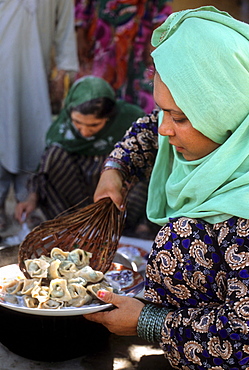
A woman scoops mantu, steamed dumplings stuffed with spiced meat, onto a plate to serve to guests, at a home in Mazar-i Sharif, Afghanistan
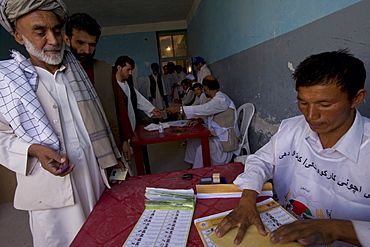
Scenes from voting on the day of presidential and provincial elections in Mazar-i Sharif, Afghanistan.

A group of Marco Polo sheep rams (Ovis ammon polii) relax on a bare patch on a snowy slope in the eastern Pamir Mountains, Gorno

Cuban boxer, Rafael Perez, trains on equipment he constructed from discarded tractor and truck parts, in his home made gym in the yard of his small ramshackle house in Vinales, Cuba.
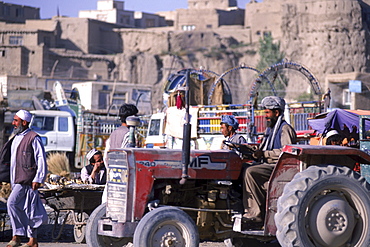
A tractor drives through a bustling market that flourishes below the old city walls in the town of Ghazni, Afghanistan.

An adolescent Pashtun girl shields her face as she carries water through the streets of the Meira camp for earthquake survivors, Northwest Frontier Province, Pakistan. The conservative code of the Pashtun tribe of the area dictate that girls must cover themselves, including their faces, after their first period. The crowded life in the camp has made such rules difficult to follow. The Meira Tent camp (also called Mera, or Maria camp), is located on the Indus River in the Battagram district. The camp, the largest for displaced people in Pakistan, hosts over 21,000 earthquake survivors, primarily from the Allai valley in Pakistan's NWFP, one of the areas worst-hit by the October 8, 2005 earthquake.

A truck drives over a makeshift bridge supported by ruined tanks on the road north of the Salang Tunnel in Baghlan province, August 31, 2002. High in the mountains of the Hindu Kush, the road was destroyed several years ago by a flood from raging mountain rivers. The road was improved by the Soviets after their 1979 invasion of Afghanistan, and was a crucial link for troops and supplies coming from the Soviet Union. The mountain road is in terrible condition, and its repair is crucially important for the reconstruction of the country

Men, soldiers and schoolboys carry banners and photos to the shrine in the Panjshir Valley of the famous Tajik commander, Ahmad Shah Masood, during a memorial on the one year anniversary of his assasination, September 9, 2002. Masood was a revered mujahedin leader who also was one of the leaders of the Northern Alliance which opposed the Taliban and helped the US Military in their defeat. Masood was assasinated by what are thought to be Al Queda operatives on Sept. 9, 2001. A shrine has been erected in the Panjshir Valley from where he led much of his resistance to both the Soviet and Taliban forces, to honor this latest of Afghan war heros.

Men and boys on bikes ride past a towering, ancient minaret, outside of Ghazni, Afghanistan, October 1, 2002. Made of brick decorated with Kufic and Naksh Script and floral motifs, the minaret dates back to the early 12th century and was built by Sultan Masud III of the Ghaznavid Dynasty, who ruled over an empire encompassing much of Afghanistan, Northern India, Persia and Central Asia. The minaret was once three times as tall as its current 70 feet, and is thought to have been part of a large mosque complex. Now an important truck stop on the road to Kandahar, Ghazni, located on the Lora River at the elevation of 2,225 meters, is the capital of Ghazni province and is a market for sheep, wool, camel hair cloth, corn, and fruit-it also continues to be a haven for Taliban insurgents.

A young Cuban couple dances to a live salsa band in one of two clubs in the small town of Vinales, in the Vinales Valley, Cuba. A largely rural region of traditional tobacco farming, the Vinales Valley has become a popular tourist destination.
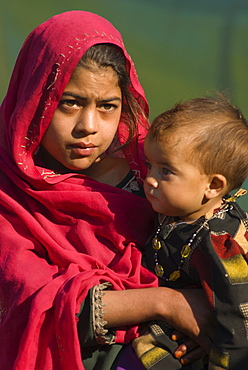
A Pashtun girl holds her younger brother, in the Meira camp for earthquake survivors in the Northwest Frontier Province, Pakistan. The Meira Tent camp (also called Mera, or Maria camp), is located on the Indus River in the Battagram district. The camp, the largest for displaced people in Pakistan, hosts over 21,000 earthquake survivors, primarily from the Allai valley in Pakistan's NWFP, one of the areas worst-hit by the October 8, 2005 earthquake.

Beth Rodden and Tommy Caldwell get in some cross training with a piggy-back ride outside Estes Park, Colorado.
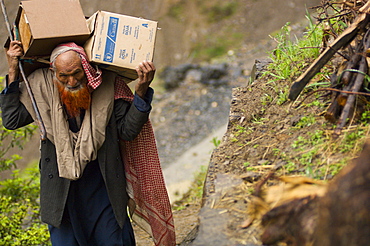
A Pashtun man returning home to his mountain home from a camp for earthquake survivors, carries boxes up a steep hill, in the Battagram District, Pakistan's Northwest Frontier Province. The Pakistan army has dictated that all camps for people displaced by the earthquake be emptied by early April, whether families want to return or not. The Battgram district was one of the worst-hit by the October 2005 earthquake, and aftershocks and heavy rains continue to trigger landslides, which have hampered reconstruction efforts and the return of earthquake survivors to their mountain villages from the low altitude tent camps where many spent the winter.

At the Meira tent camp for earthquake survivors, Pashtun men load their family's possessions onto a tractor trailer as they prepare to leave the camp, Allai Valley, NWFP, Pakistan.
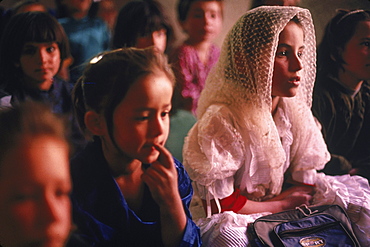
Tajik girls study in a rural school, without windows, desks or chairs, in the Panjshir Valley, Afghanistan. The Panjshir Valley, which was a stronghold for Tajik commander Achmed Shah Masood, was heavily bombed during the Soviet occupation of Afghanistan, but much has now been rebuilt.
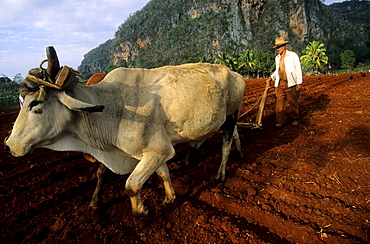
A Cuban farmer plows a field with oxen, in preparation for planting corn, in the Vinales Valley, Cuba. Much of the farm work in Cuba is done by hand without machinery.
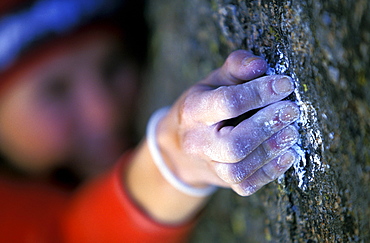
Rock climber Beth Rodden crimping a hold with chalky hands on Renaissance Wall at the Lumpy Ridge climbing area in Rocky Mountain National Park outside of Fort Collins, Colorado. Beth Rodden is one of the world's leading free climbers.

Young boys on donkeys watch over flocks of goats, sheep and donkeys near the top of the Shebar Pass, which crosses into the Province of Bamiyan. Due to a devastating drought in the region, dry wheat farming has failed for three years from 1998-2002 and the forage is extremely sparse, The pass is a strategic point leading into the Central Highlands, the Koh-i-Baba range and the Hazarajat, at the end of the Hindu Kush. Most of the people of this region are of the Hazara tribe, and are Shi'a Moslems who have been persecuted for centuries by many of the Pashtun rulers of Afghanistan, who are from the Sunni sect.
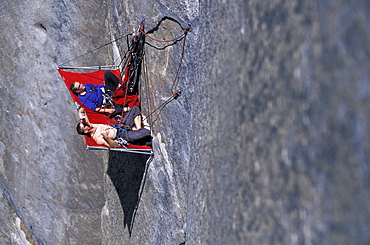
Beth Rodden and Tommy Callwell hang out on a rock ledge so Tommy can rest from rock climbing Dihedral wall, a multi pitch route on El Capitan in Yosemite National Park, California.
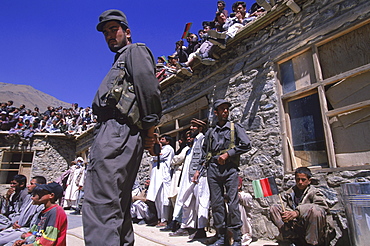
Armed guards keep an eye on the crowds during a ceremony below the shrine of Ahmad Shah Masood in the Panjshir Valley, September 9, 2002. Masood was a revered mujahedin leader who fought the Soviets in the Afghan-Soviet war, and who also was one of the main leaders of the Northern Alliance which opposed the Taliban and helped the US Military in their defeat. Masood was assasinated by what are thought to be Al Queda operatives on Sept. 9, 2001. A shrine has been erected in the Panjshir Valley, near the village of Bazarak, from where he led much of his resistance to both the Soviet and Taliban forces, to honor this latest of Afghan war heros.
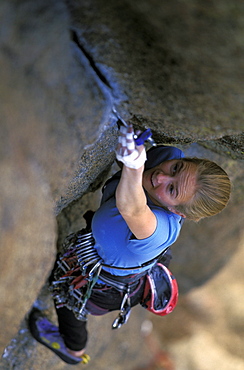
Beth Rodden places a cam in a crack in Rocky Mountain National Park, Colorado. Beth Rodden is one of the worlds leading rock climbers.

Workers pause by the columns of a 19th century summer pavilion in the Babur Gardens, or Bagh-i-Babur, Kabul, Afghanistan, September 25, 2002. The pavilion, which was used as a restaurant in the 20th century, was built by Amir Abdur Rahman, but was heavily damaged by the factional fighting of the mujihadeen in the 1990's and later by the Taliban. The buildings and gardens are now being carefully restored. Shah Babur, a descendent of Ghengis Khan and grandson of Tamerlane, is credited for founding the great Moghul dynasty which ruled India for two centuries. Babur built the palace and created the gardens on a hill looking over the southern part of Kabul in the 16th century,
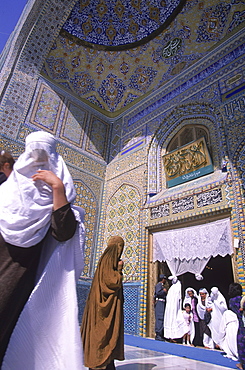
Women in burqas flock like doves to the entrance of the main mosque at the Blue Mosque complex, Mazar-i-Sharif, Balkh Province, September 23, 2002. Wednesday mornings are reserved for women to come and worship at the mosque.Elaborate tilework and decorated spires adorn the mosque, also known as the Shrine of Hazrat Ali (Hazrat Ali was the son-in-law of the prophet Mohammed), who is believed to be buried here. The shrine, of particular importance for Afghanistan's Shi'ite Muslims, was first built in the 12th century, destroyed by Genghis Khan, and rebuilt in 1481. The current mosque, considered by some to be one of the most beautiful in Central Asia, is a modern restoration.

